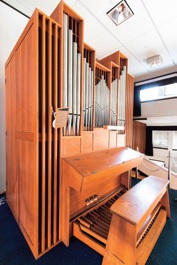A documentary film conveying the passion, respect and words of a legendary debate at Komaba a half-century ago
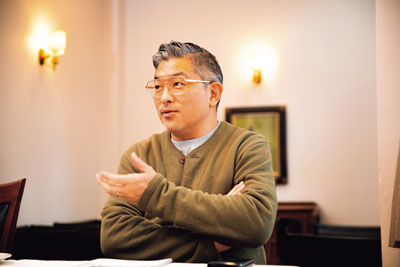
| Tansei-colored Filmmakers 1 |
A documentary film conveying the passion, respect and words of a legendary debate at Komaba a half-century ago
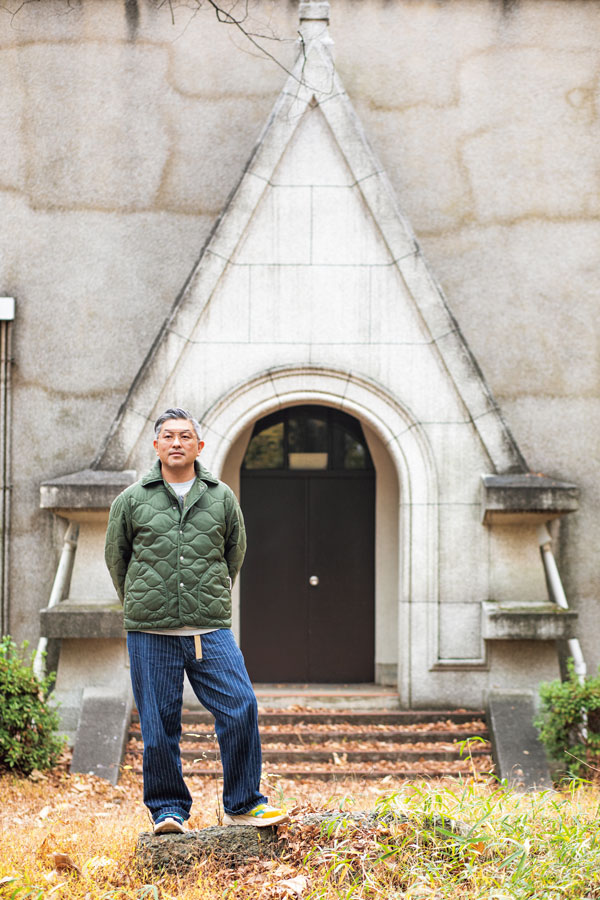
The director stands in front of a service entrance that leads directly to the podium in the Lecture Theater.
Photo: Junichi Kaizuka
On May 13, 1969, a memorable debate occurred at the University of Tokyo’s Komaba Campus when Yukio Mishima took to the podium in the auditorium of the Lecture Theater at the request of the UTokyo All-Campus Joint Struggle League (Zenkyoto). In what became a legendary encounter, Mishima spent four hours passionately and earnestly facing off against an audience of over 1,000 people with his words, approximately a year and a half before his ritual suicide by disembowelment at Camp Ichigaya.
Drawing on footage captured by TBS Television at the event, the director Keisuke Toyoshima, a graduate of the College of Arts and Sciences, brought together testimonies from thirteen individuals involved at the time to create a documentary film telling the whole story of the debate. A film buff who grew up in Hamamatsu, Shizuoka Prefecture, Toyoshima was inspired to pursue his interest at UTokyo by a booklet written by one of the University’s researchers.
“In my third year of high school, I picked up a book at a bookstore titled Eiga kara no Kaiho [Liberation from Cinema], a compilation of lectures for preparatory school students on the works of director Yasujiro Ozu. In the book, it was mentioned how a new department at UTokyo called ‘Culture and Representation Studies’ had been established, and that if anyone was interested, they were most welcome to join it. The author was Professor Shigehiko Hasumi.”
After moving to Tokyo, he entered a preparatory school, where he studied “to the point of going crazy” before entering the University of Tokyo in the Humanities and Social Sciences III stream. Toyoshima began taking film-related classes in his first year of undergraduate study and started making independent films through interactions with Hidenori Miki (currently head of the Tetsuryokukai preparatory school) and Chika Kinoshita (currently a professor at Kyoto University). In his fourth year, under the supervision of Professor Hisaki Matsuura, he wrote his graduate thesis on Ernst Lubitsch’s 1942 film To Be or Not to Be. The screenplay is about how the members of a theater troupe staging a production of Hamlet during the German invasion of Warsaw flee the city dressed as Nazis. Despite confronting a work of international historical importance, what sticks with Toyoshima to this day are the words that Professor Hasumi said to him when reviewing his thesis.
“I had analyzed the historical positioning of the film in the first part of the thesis and the structure of the film in the second part, but Professor Hasumi told me that the exercise was meaningless if I didn’t write a third part. He said that I had to try to discover something new. I consider myself pretty versatile and I’m confident that I would be able to perform well in any field to some extent, but I still ask myself whether I have been able to write a third part, even in the medium of film.”
After graduating, Toyoshima studied overseas at the American Film Institute (AFI), and since returning to Japan, he has been active as a professional film director in all manner of genres, including horror, comedy and idol films, but had not yet turned his hand to documentary filmmaking. As an undergraduate, he had learned about the methods of directors Shinsuke Ogawa and Makoto Sato, who had immersed themselves for long periods in the thick of the social problems they addressed in their films, and he had thought that this was something he would never be able to handle. He was not a part of the generation involved in the student movement, nor was he a big fan of Mishima’s work. Nevertheless, when he was approached by producer Tetta Tone, a fellow alumnus, but someone he had not crossed paths with as a student, Toyoshima decided to accept the project. The deciding factor, he says, was that Tone wanted to make a film from the perspective of a generation that did not know the impact of Mishima’s suicide.
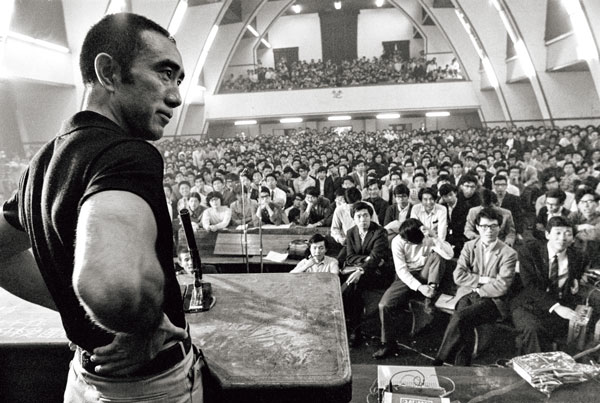
(Photo by Hiroshi Shimizu, Shinchosha).
“As a director, I am limited in what I can do. I felt that I would not be able to make the film without capturing the present appearance and emotional movements of the sharp-tongued young man holding a baby in his arms who, among all the speakers, had made a particularly strong impression on me. Interviewing Masahiko Akuta, an active thespian with a unique aura, was no easy matter, and it felt like I was being scolded over the four hours we spoke. But at the same time, it also felt as though I was capturing some solid footage.”
Something Toyoshima became aware of through the thirteen interviews he conducted and the process of editing the video, like a kind of virtual enemy, was social media discourse characterized by the anonymous posting and dissemination of ugly words that often end up hurting people.
“I don’t think people today can fully understand the substance of the debate,” he says. “But I felt a sense of propriety in the way they communicated – how they identified themselves as Mishima and Zenkyoto, and exchanged words at a range where they could each sense each other’s breathing.”
One of the lines incorporated by the director into the narration of the film recounts how “This was a debate that consisted of passion, respect and words.” The presence of that “third part” certainly comes across here, as well.
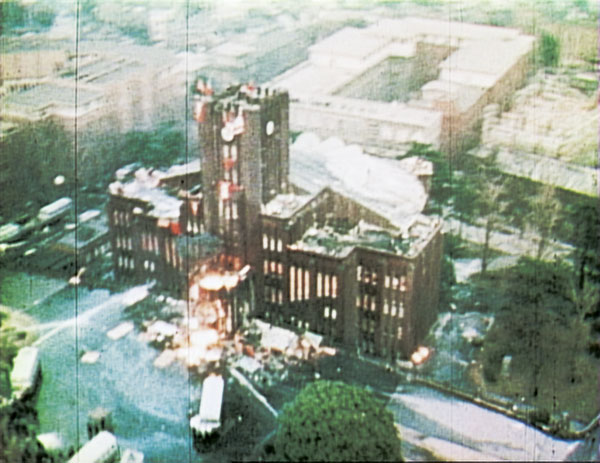
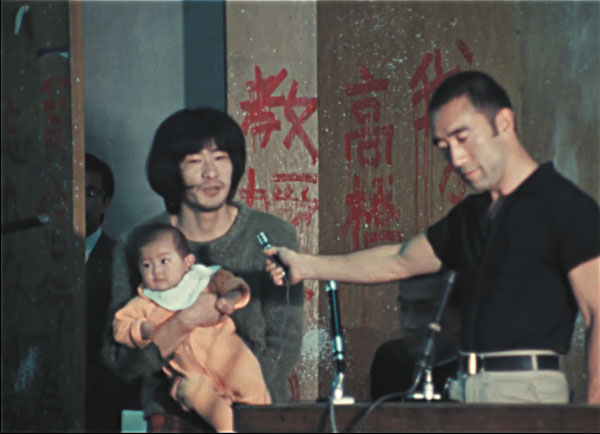
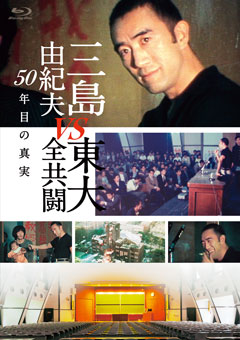
Mishima Yukio vs Todai Zenkyoto 50-nen-me no Shinjitsu [Mishima: The Last Debate].
Directed by Keisuke Toyoshima, featuring Yukio Mishima, Masahiko Akuta, Osamu Kimura and others. Narration by Masahiro Higashide. Distributed by Gaga. 2020. DVD ¥4,180 (tax included). Released by TBS Television. Sales distribution by TC Entertainment.
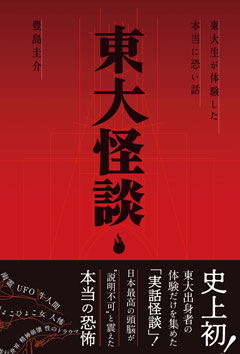
Toyoshima’s book Todai Kaidan [UTokyo Ghost Stories] (Cyzo, 2022)
A collection of ghost stories from eleven members of the UTokyo community that includes tales of some of the terrifying people they encountered and their experiences of supernatural phenomena. “Conceivably, rational-minded UTokyo members should not readily believe in the paranormal. So, my intention was to show that if even these people have such experiences, then they might well be true. In writing a book that focuses on UTokyo members with ghost stories to tell, I drew on my experience in horror films and series, including my directorial debut, Kaidan Shin Mimibukuro [Tales of Terror] as well as interviewing skills that I cultivated in making my film about Mishima.”
Interview conducted in cooperation with “Lever son verre, Komaba,” a French restaurant and guesthouse located in the renovated alumni hall of the former First Higher School. https://leversonverre-tokyo.com/restaurant/komaba.html
|
The pipe organ in the second floor section of the Lecture Theater on the Komaba Campus was once housed in a church in Kichijoji, Tokyo. Hearing that it was on the verge of being scrapped due to a fire, a UTokyo faculty member devised a plan to bring it to the University. However, there were not enough funds to complete the extensive repairs necessary. Thus, Professor Yoshiyuki Nitta of the College of Arts and Sciences (currently an Emeritus Professor) consulted with his good friend, Minoru Mori. Mori received the wholehearted support of his father and then-president of the Mori Building, Taikichiro Mori, and through the efforts of organ builder Hiroyuki Mochizuki, the restored organ was installed at UTokyo in 1977. In this manner, thanks to the persuasive influence based on the friendship of the two men dating back to their days at the Komaba Dormitory, as well as the understanding of the elder Mori, who was a music aficionado, the plan to place an organ on UTokyo’s campus was realized. It was a rare occurrence, as apart from the national arts universities, most national universities in Japan do not own organs. The organ may be small, but its tremulant and coupler devices enable the instrument to produce a great variety of beautiful tones. The organ is known as the “queen of musical instruments.” The Organ Committee of the College of Arts and Sciences cherishes the Mori Organ as “our little daughter,” and utilizes it in regular concerts and other events. |
* This article was originally printed in Tansei 44 (Japanese language only). All information in this article is as of March 2022.



